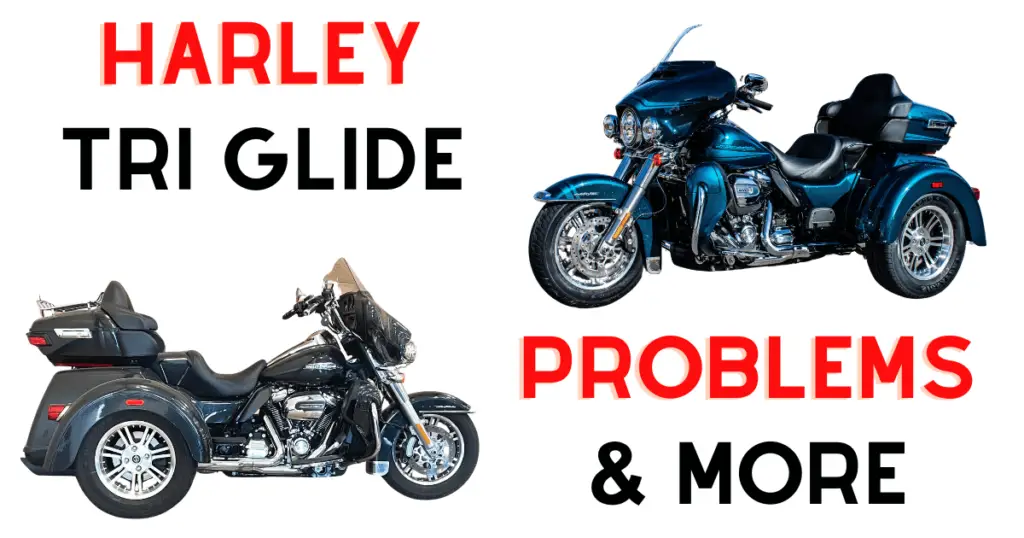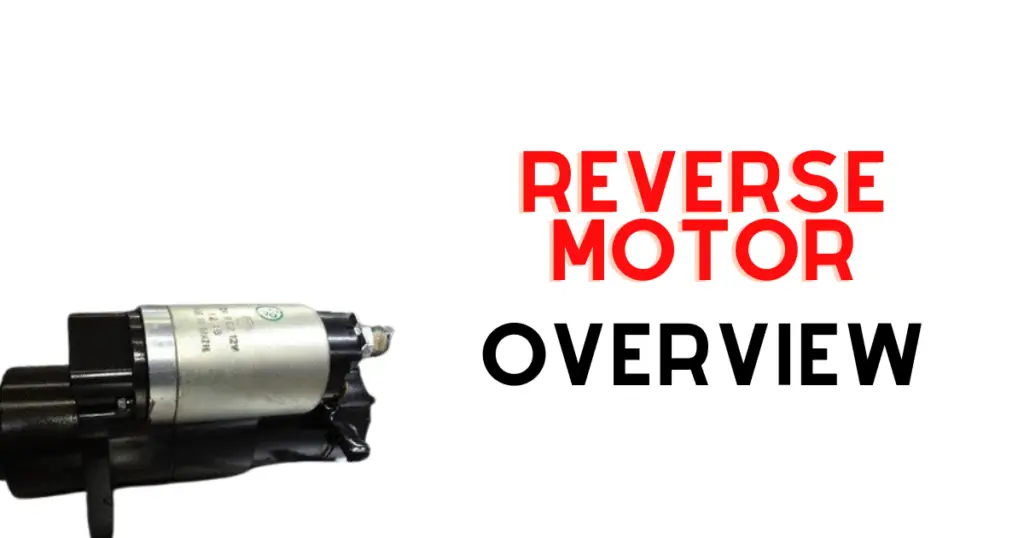Tri Glide motorcycles, with their unparalleled stability and comfort, have revolutionized the way we think about long-distance cruising on three wheels. These marvels of engineering bring the thrill of the ride to those who seek an extra layer of security without sacrificing the Harley essence. However, as with any ride that breaks the mold, they come with their own set of quirks, particularly when it comes to the reverse motor system—a feature that sets trikes apart, adding a layer of convenience unheard of in their two-wheeled counterparts.
Imagine this: you’re ready to back out of a tight spot, you engage the reverse, and… nothing. Just a click, or worse, silence. That’s when the Tri Glide reverse motor problems come into play, turning what should be a simple maneuver into a puzzle. Whether it’s a stubborn system that refuses to engage or a silent plea for help from beneath the seat, these issues can put a damper on what should be a seamless ride.
From blown fuses to intricate electrical gremlins lurking within, the reverse motor system’s woes are as varied as they are frustrating. The heart of the matter often lies in the Reverse Control Module (RCM) solenoid, a crucial component that, when acting up, can bring your reverse to a standstill. Diagnosing these issues requires a blend of mechanical savvy and a systematic approach, peeling back the layers of complexity to reveal the root of the problem.
For Tri Glide enthusiasts, understanding and tackling these reverse motor issues head-on is more than just maintenance—it’s about preserving the essence of the ride. Regular checks and addressing symptoms early can steer you clear of long-term headaches, ensuring that your Tri Glide remains not just a statement of style and comfort but a testament to reliability.
Ready to dive into the world of Tri Glide reverse motor troubleshooting? Let’s roll up our sleeves and ensure that your trike’s reverse is as ready for adventure as you are, keeping the freedom of the ride alive and well.
Related read: Harley Death Wobble Model Years, Causes, Signs and More
Overview of the Most Annoying Tri Glide Reverse Motor Problems

Tri Glide reverse motor issues can range from simple electrical faults to more complex mechanical problems. This section breaks down the common issues and functionality to help pinpoint and understand the underlying causes of reverse motor malfunctions.
How To Identify Common Issues
Common issues with the Tri Glide reverse motor often manifest in various symptoms that owners may encounter. They can report these symptoms on trike forums, seeking advice and solutions from fellow Tri Glide enthusiasts. Listed below are specific problems frequently discussed:
- Motor responds with a clicking sound, but fails to engage the reverse gear.
- Complete lack of response when the reverse button is activated.
- Intermittent functionality of the reverse system leading to unreliable operation.
Tri Glide owners may perform preliminary checks like verifying the voltage levels at the reverse control module (RCM) solenoid and inspecting whether the RCM breaker is tripped, both of which should be functioning correctly for the reverse motor to operate.
How Does The Reverse Motor Work?

To understand the core functionality of a Tri Glide reverse motor, it is key to comprehend the motor’s role in the operation of the trike:
- The motor is engaged using a reverse button.
- Upon activation, an electrical signal is sent to the RCM and the system waits for a steady light, indicating readiness.
- The motor then should power the trike into reverse, utilizing mechanical linkage to the transmission.
If the system fails at any point in this process, the reverse operation will be hampered, pointing towards either an electrical issue or a mechanical fault in the linkage. Electrical diagnostics can typically be performed with simple tools such as a test light and a multimeter.
Troubleshooting and Diagnostics Procedure
When addressing Tri Glide reverse motor issues, mechanics systematically approach the problem with mechanical inspection and electrical testing to ensure a comprehensive diagnosis.
Mechanical Inspection
Mechanics begin by checking the physical aspects of the reverse system. They inspect for any signs of mechanical wear or damage that could impede the Tri Glide’s ability to engage reverse. This includes verifying the integrity of the reverse gear linkage and ensuring that there is no obstruction that would prevent the motor from operating properly. A manual examination of the reverse system may reveal issues that aren’t immediately apparent through electrical diagnostics.
Electrical Testing
Electrical testing is crucial when the reverse motor fails to function even though mechanically everything appears intact. Using a multimeter, technicians test for continuity within the reverse system’s electrical circuit. They check the battery voltage to ensure sufficient power is available to the reverse motor. A detailed examination includes scrutinizing the reverse switch, the Reverse Control Module (RCM) solenoid, circuit breakers, and fuses for any signs of malfunction or failure. Circuit breakers that repeatedly trip or blown fuses are indicative of underlying electrical issues that need rectification. The manufacturer’s manual often provides specific electrical testing procedures tailored to the Tri Glide model, which guides mechanics to approach the issue methodically, ensuring no component is overlooked.
Repair and Replacement Procedures
When addressing issues with the Harley Davidson Tri Glide reverse motor, one often has to consider either a rebuild of the existing motor or the installation of spare parts. These procedures should be executed with precision and according to manufacturer guidelines to ensure functionality and safety.
Step-by-Step Motor Rebuild
The rebuild process of a Tri Glide reverse motor necessitates a meticulous approach. It begins with the proper disassembly of the reverse motor, ensuring that all components are accounted for and assessed for damage. Here’s a simplified breakdown:
- Disconnect the battery to prevent any electrical issues.
- Remove the reverse motor from its mounting, keeping track of all hardware.
- Open the motor casing to examine internal components like gears, bearings, and electrical connections.
- Clean all parts thoroughly, replacing any that show signs of wear using a rebuild kit if available.
- Assemble the motor back together, following the reverse order of disassembly.
Note: It’s crucial to follow specific instructions provided by service manuals or kits for a successful rebuild.
Spare Part Installation
The reinstallation of the reverse motor, whether with new or rebuilt parts, must be approached with care. The process typically involves:
- Aligning the new or rebuilt reverse motor into position on the Tri Glide.
- Securing the motor with the appropriate bolts and connectors.
- Reconnecting any electrical wiring following the schematic from the service manual.
- Testing the motor’s functionality before completing the reinstallation process.
Correct installation ensures the reverse motor operates as intended without causing further problems.
Preventive Maintenance and Best Practices
The longevity and reliability of a Tri Glide motorcycle’s reverse system hinge on periodic maintenance and proper alignments. These measures guard against sudden failures and ensure that the vehicle maintains warranty standards.
Regular Check-ups
Owners should schedule regular service check-ups with an authorized dealer. During these check-ups, technicians can:
- Inspect the reverse motor and associated components for signs of wear or damage.
- Test electrical connections with a multimeter to ensure the integrity of the system.
- Confirm that the solenoid operation is smooth and without irregular sounds or excessive clicking.
A consistent maintenance routine helps to catch issues early, potentially saving the rider from costly repairs and ensuring safe operation.
Alignment and Adjustments
Proper alignment plays a critical role in the performance of a Tri Glide’s reverse system. Owners should:
- Verify that the reverse mechanism is correctly aligned during service appointments.
- Ensure that any adjustments are carried out by a qualified technician.
Adjustments may be required over time to maintain optimal functionality. Correct alignment reduces strain on the reverse system, thereby preventing premature wear.
By following these guidelines, riders optimize the performance of their Tri Glide’s reverse system and abide by warranty requirements.
Additional Resources and Support
When addressing Tri Glide reverse motor problems, riders have access to a wealth of resources for both professional assistance and community advice. These avenues provide reliable support and insights for troubleshooting and repair.
Professional Assistance
Harley-Davidson Dealerships: Harley-Davidson offers professional service for Tri Glide and Freewheeler models through their dealerships. Technicians who are experts in Harley models, including the reverse motor systems, can provide diagnostics and repairs, often covered under the Extended Service Plan (ESP) if applicable.
Fix My Hog: This platform provides detailed diagnostic tips and repair tutorials aimed at the avid DIY mechanic. For those who prefer a more hands-on approach, Fix My Hog features videos and articles that specifically address issues with the Tri Glide reverse system.
Community Guidance
Trike Talk Forum: An active online community where Tri Glide owners discuss common issues, including reverse motor problems. Members can offer solutions based on personal experiences and share valuable tips.
- Forum Threads: Direct experiences with reverse motor issues and potential fixes are often detailed in individual threads.
- Freewheeler Discussions: Owners of similar models, such as the Freewheeler, also provide relevant advice given the comparable reverse system mechanics.
Related: Dreaded Harley Freewheeler Problems: Too Much To Handle?
Riders are encouraged to cross-reference suggestions from these resources with professional advice to ensure the most accurate and effective resolution for their Tri Glide reverse motor concerns.
Frequently Asked Questions
Harley-Davidson Tri Glide owners often encounter reverse motor issues. This section addresses common questions regarding the reverse motor, providing clear troubleshooting steps and maintenance advice.